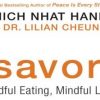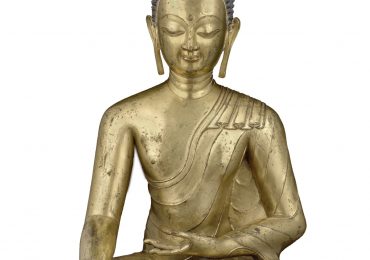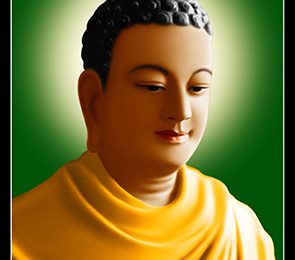
Buddhism is a religion based on the teachings of Siddhartha Gautama, who lived about 25 centuries ago in what is now Nepal and northern India. He came to be called “the Buddha,” which means “awakened one,” after he experienced a profound realization of the nature of life, death and existence. In English, the Buddha was said to be enlightened, although in Sanskrit it is bodhi, “awakened.”
In the remaining years of his life, the Buddha traveled and taught.
However, he didn’t teach people what he had realized when he became enlightened. Instead, he taught people how to realize enlightenment for themselves. He taught that awakening comes through one’s own direct experience, not through beliefs and dogmas.
In the centuries following the Buddha’s life, Buddhism spread throughout Asia to become one of the dominant religions of the continent. Estimates of the number of Buddhists in the world today vary widely, in part because many Asians observe more than one religion, and in part because it is hard to know how many people are practicing Buddhism in Communist nations like China. The most common estimate is 350 million, which makes Buddhism the fourth largest of the world’s religions.
The Life of the Buddha
What’s a Buddha?
HOW IS BUDDHISM DISTINCTIVE FROM OTHER RELIGIONS?
Buddhism is so different from other religions that some people question whether it is a religion at all.
For example, the central focus of most religions is God, or gods. But Buddhism is non-theistic. The Buddha taught that believing in gods was not useful for those seeking to realize enlightenment.
Buddhism: Philosophy or Religion?
Atheism and Devotion in Buddhism
Are There Gods in Buddhism?
Most religions are defined by their beliefs.
But in Buddhism, merely believing in doctrines is beside the point. The Buddha said that we should not accept doctrines just because we read them in scripture or are taught them by priests.
Instead of teaching doctrines to be memorized and believed, the Buddha taught how we can realize truth for ourselves. The focus of Buddhism is on practice rather than belief. The major outline of Buddhist practice is the Eightfold Path.
What Do Buddhists Believe?
What It Means to Practice Buddhism
The Eightfold Path
BASIC TEACHINGS
In spite of its emphasis on free inquiry, Buddhism is not whatever you want it to be. It might best be understood as a discipline and an exacting discipline at that. And although Buddhist teachings should not be accepted on blind faith, understanding what the Buddha taught is an important part of that discipline.
For example, the foundation of Buddhism is the Four Noble Truths. The Truths are:
- The truth of suffering (dukkha)
- The truth of the cause of suffering (samudaya)
- The truth of the end of suffering (nirhodha)
- The truth of the path that frees us from suffering (magga)
By themselves, the Truths don’t seem like much, I realize. But beneath the Truths are countless layers of teachings on the nature of existence, the self, life, and death, not to mention suffering.
The point is not to just “believe in” the teachings, but to explore them, understand them, and test them against one’s own experience. It is the process of exploring, understanding, testing and realizing that is Buddhism.
DIVERSE SCHOOLS OF BUDDHISM
About 2,000 years ago Buddhism divided into two major schools, called Theravada and Mahayana. For centuries, Theravada has been the dominant form of Buddhism in Sri Lanka, Thailand, Cambodia, Burma (Myanmar) and Laos. Mahayana is dominant in China, Japan, Taiwan, Tibet, Nepal, Mongolia, Korea, and Vietnam. In recent years, Mahayana also has gained many followers in India. Mahayana is further divided into many sub-schools, such as Pure Land an Theravada Buddhism
Vajrayana Buddhism, which is chiefly associated with Tibetan Buddhism, is sometimes described as a third major school.
However, all schools of Vajrayana are also part of Mahayana.
The two schools differ primarily in their understanding of a doctrine called “anatman” or “anatta.” According to this doctrine, there is no “self” in the sense of a permanent, integral, autonomous being within an individual existence. Anatman is a difficult teaching to understand, but understanding it is essential to making sense of Buddhism.
Very basically, Theravada considers anatman to mean that an individual’s ego or personality is a delusion. Once freed of this delusion, the individual may enjoy the bliss of Nirvana. Mahayana pushes anatman further. In Mahayana, all phenomena are void of intrinsic identity and take identity only in relation to other phenomena. There is neither reality not not-reality; only relativity. The Mahayana teaching is called sunyata, “emptiness.”
WISDOM, COMPASSION, ETHICS
It is said that wisdom and compassion are the two eyes of Buddhism. “Wisdom,” particularly in Mahayana Buddhism, refers to realization of anatman or shunyata. There are two words translated as “compassion” — metta and karuna. Metta (Pali) is a benevolence toward all beings, without discrimination, that is free of selfish attachment. Karuna refers to active sympathy and gentle affection, a willingness to bear the pain of others, and possibly pity. Metta, karuna, mudita (sympathetic joy) and upeksha (limitless equanimity) are considered four divine states or immeasurable virtues that Buddhists are to cultivate in themselves.
Those who have perfected these virtues will respond to all circumstances correctly. For the rest of us, there are Precepts.
CLEARING UP CONFUSION BY WAY OF CONCLUSION
There are two things most people think they know about Buddhism — that Buddhists believe in reincarnation, and that all Buddhists are vegetarian. These two statements are not true, however. Buddhist teachings on rebirth are considerably different from what most people call “reincarnation.” And although vegetarianism is encouraged, in many sects it is considered a personal choice, not a requirement.
By Barbara O’Brien







